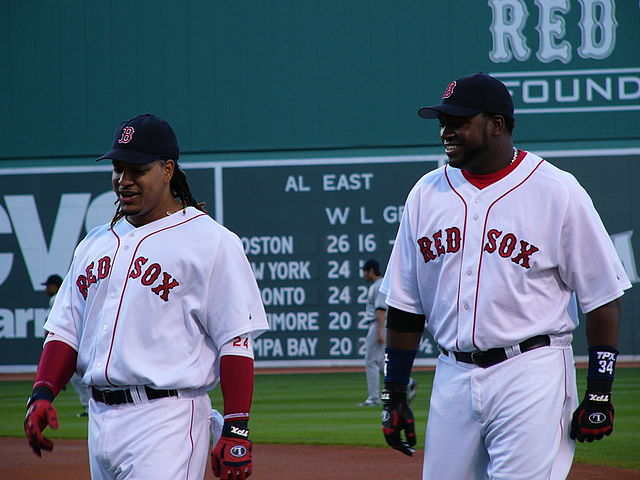
Throughout the history of Major League Baseball (MLB) there have been countless iconic international players. Ichiro Suzuki from Japan, Roberto Clemente from Puerto Rico, and Miguel Cabrera from Venezuela, just to name a few. Featuring players from across the globe, MLB teams are a plethora of cultures, skillsets, and approaches to the game.
MLB is a truly global league, but no foreign country seems to play a bigger role than the Dominican Republic. In 2020 alone, there were 110 Dominican MLB players. Some, like Juan Soto, Fernando Tatis, Jr., and Vladimir Guerrero, Jr., have solidified themselves as the game’s brightest young stars, garnering attention for their fantastic play and passion for the game.
In brainstorming how to feature the greatest Dominican players, we first tried to come up with the all-time starting nine, but that was far too difficult to narrow down. Instead, we tried to come up with a 25-man roster, but even that couldn’t do the topic justice. As a result, we created a 40-man roster, complete with a coaching staff and front office, and “Tomorrow’s Team,” featuring the players, coaches, and front office members whose stories are not yet completely told. In this five-part series, we’ll cover the best Dominican players to ever put on the uniform, divided into five categories: infielders and catchers, outfielders, pitchers, coaching staff and front office, and “Tomorrow’s Team.”
(For this list, we decided to limit our selection to the players who spent a majority of their formative years in the D.R. As a result, players of Dominican heritage that were raised in the U.S., like Alex Rodriguez and Manny Machado, will be left off this list.)
Back for more, eh? Hope you’re ready for today’s list: the outfielders! And of course, be sure to check out Part 1 of our list, the infield and catchers.
Left Field:
Manny Ramírez
From Santo Domingo

Almost every baseball fan can name you a moment involving Manny Ramírez. Perhaps it was his 2004 World Series MVP for the Boston Red Sox, or maybe his electrifying run after being traded to the Los Angeles Dodgers in 2008, or even the interesting decision to cut off the cutoff man.
Regardless, Ramírez is one of the most important sluggers in MLB history, with eye-popping totals on several all-time lists.
Ramírez currently sits at 15th all-time in career home runs with 555, and 18th all-time in career RBIs with 1,831; of his 2,574 career hits, over one out of every five was a home run, and over 71% of them scored a run. For his efforts, Ramírez won a whopping nine Silver Sluggers, including eight straight from 1999-2006, and was named an All-Star 12 times. Ramírez often received MVP consideration, but none was more impressive than his fourth place NL MVP finish in 2008, despite playing only half a season in the league.
Ramírez was an unbelievable hitter who provided a spark for a handful of teams; his biggest role, however, was with the Boston Red Sox, in which he formed a one-two Dominican punch with teammate David Ortiz to create one of the scariest offenses in MLB history and break the Curse of the Bambino. While alleged steroid-use has tainted Ramirez’s legacy, there’s no doubting the importance he had on the city and the culture of excellence that the Red Sox have developed in recent years.
Oh yeah, and he was fun to watch for so many reasons beyond his sweet righthanded swing. That’s always a plus.
George Bell
San Pedro de Macorís
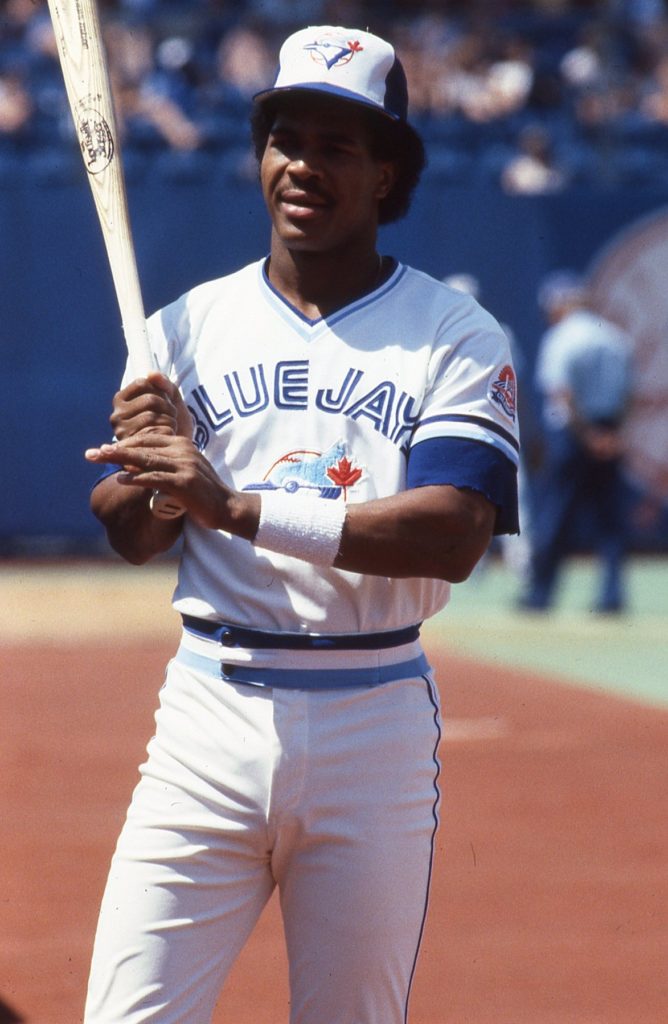
Jorge Antonio Bell Mathey – or, as he was known to Toronto Blue Jays fans for seven fantastic seasons, George Bell – was the first Dominican to win an MLB MVP award, and was one of the key players behind Toronto’s first arrival in postseason play. H was possibly on his way to a Hall of Fame career before a nagging knee injury forced his early retirement.
Bell was first signed by the Philadelphia Phillies, but he truly began his career after the Blue Jays shrewdly selected him in the 1980 Rule 5 draft, per the urging of legendary Dominican scout Epy Guerrero (more on Guerrero in part four of this series). Upon earning his first true starting role at age 24 in 1984, he became a key member of a loaded outfield that helped lead the Jays to their first AL East title in 1985, with solid defense and one of the most powerful swings in the league.
His best season came in 1987, when he was named an All-Star and earned the AL MVP for posting a .308 batting average, 47 home runs, and leading the league in RBI (134) and total bases (369). The late eighties were truly the “Summers of George,” as he was named an All-Star once more while with the club (1989) and helped edge Toronto closer to the World Series.
After signing with the Chicago Cubs in 1991 and earning his third and final All-Star selection, he was traded to the White Sox before the 1992 season for reliever Ken Patterson and a young, free-swinging Dominican player who had yet to tap into his abilities named Sammy Sosa. He hit 25 home runs for the second year in a row and knocked in 112 runs in 1992 at age 32, but a knee injury cut short his 1993 season and forced him into retirement. With his thunderous bat producing at an all-star rate until the end, one can’t help but imagine what type of case he could have made for Cooperstown if not for that nagging knee injury.
Despite not being enshrined in Cooperstown, he remains a well-loved figure in both Toronto and Latin America, being named to both the Canadian and Caribbean Halls of Fame, and is forever immortal in the D.R. for being the country’s first MVP.
Pedro Guerrero
San Pedro de Macorís
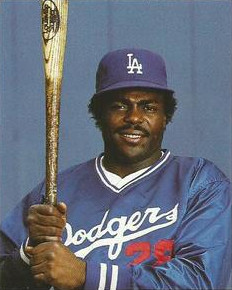
An important player for the 1980s Los Angeles Dodgers and another model of offensive consistency, Guerrero is remembered well for his performance in the 1981 World Series, but his career goes much further than that.
Getting his first serious playing time in 1981, Guerrero received his first All-Star nod and became an important cog in the Dodgers’ machine, helping them make the playoffs and reach the World Series against the New York Yankees. Guerrero was a factor in all four Los Angeles wins, including the 9-2 series-clinching victory in Game Six, when he tallied five RBIs and eight total bases; for his efforts, he was named Co-MVP of the Series, along with Ron Cey and Steve Yeager.
Guerrero received attention beyond the stellar 1981 campaign, however; he was named an All-Star four more times (1983, 1985, 1987, 1989) and won a Silver Slugger in 1982. He would retire in 1992 with a career batting average of .300 and 898 RBIs. While not the greatest totals in history, Guerrero was a fan favorite for his clutch performances and big personality.
That’s all you can really ask for, isn’t it?
Moisés Alou
Born in USA, Dominican on his father’s side
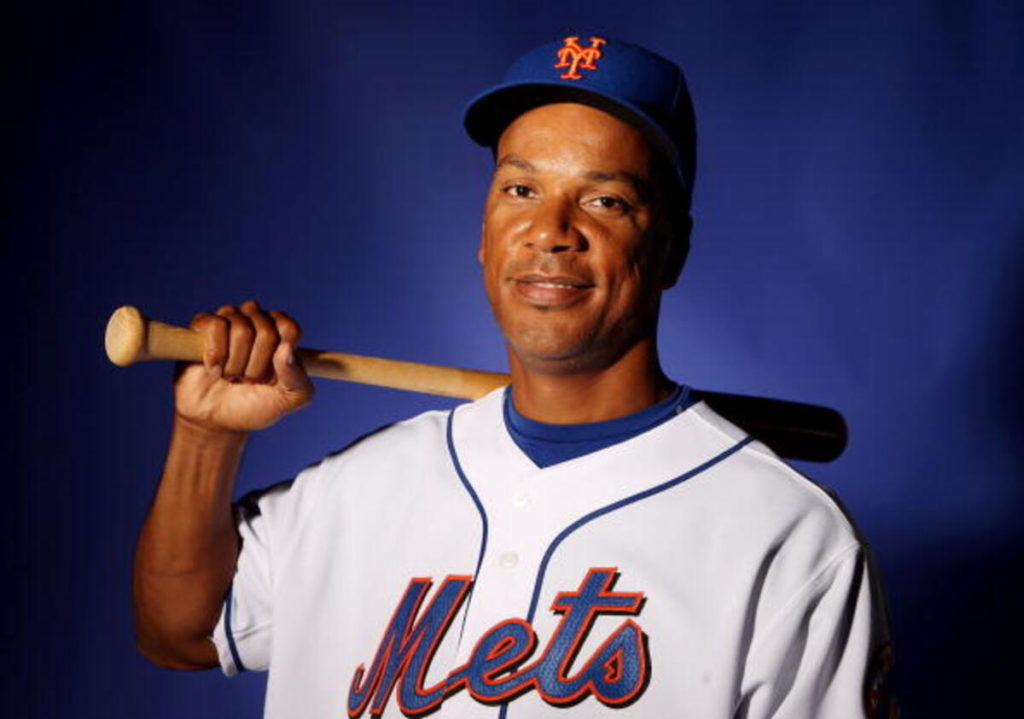
A fantastic hitter who contributed for several teams throughout his career, Alou is an important slugger who deserves attention for more than just the “Steve Bartman” incident.
Alou debuted with the Pittsburgh Pirates in 1990, but they traded him to the Montreal Expos after playing in only two games in the black and gold. He broke out in 1994, becoming an All-Star and Silver Slugger winner in a strike-shortened season that would have seen the Expos competing for the pennant. Alou would later sign with the Florida Marlins in 1997, where he led the team in home runs and RBIs to be named an All-Star once more, and played a critical role in their World Series win, leading the team with three home runs and 9 RBIs in the series.
As part of their infamous dismantling of a championship team, the Marlins traded Alou to the Houston Astros after the 1997 season, and he was subsequently named an All-Star four more times (1998, 2001, 2004, 2005), in addition to winning another Silver Slugger in 1998. He would later become a star for the Chicago Cubs in their playoff pushes in 2003 and 2004. Ending his career with a few productive years with the San Francisco Giants and New York Mets, Alou would finish with impressive career totals: 2,134 hits, 332 home runs and 1,287 RBIs. If he didn’t suffer serious injuries in 1991 and 1999, his numbers would stack up even closer with the all-time greats.
Center Field:
César Cedeño
Santo Domingo

One of the most important players in Houston Astros’ history, Cedeño was a true five-tool player who dazzled in the outfield and mystified defenses on the basepaths.
Debuting with the Houston Astros in 1970, Cedeño immediately contributed to the team’s success by posting a .310 batting average. After leading MLB in doubles with 40 in 1971, he first garnered national acclaim in 1972, when he was named an All-Star and a Gold Glove winner, hit 22 home runs, and swiped a whopping 55 bases. When asked about his performance, Astros’ manager Leo Durocher said “At 22, Cedeño is as good or better than Willie [Mays] was at the same age.”
The ‘72 campaign was just the first in a line of successful seasons for Cedeño, as he would go on to be named an All-Star three more times (only missing the cut in 1975) and win four straight Gold Gloves. One of the greater sensations in the 1970s, Cedeño was later named to the Houston Astros Hall of Fame for his efforts.
A fantastic player who achieved comparisons to Mays and Roberto Clemente, Cedeño was the definition of a “five-tool” talent.
César Gerónimo
El Seibo

One of the lesser-known members of the “Big Red Machine,” Gerónimo was a critical player to the Cincinnati Reds’ World Series titles in 1975 and 1976, with fantastic defense and a steady bat.
Winning four straight Gold Gloves from 1974 to 1977, Gerónimo was a defensive wizard who combined fantastic speed and a powerful arm to support the Reds in their conquest for dominance. In addition to defense, Gerónimo also offered steady production in the batting order, with 542 hits over that four-year span and 208 RBIs.
Although he might not get as much attention as sluggers like Pete Rose, Johnny Bench, and Joe Morgan, Gerónimo’s role on the Cincinnati Reds cannot be overlooked.
Right Field:
Vladimir Guerrero
Nizao
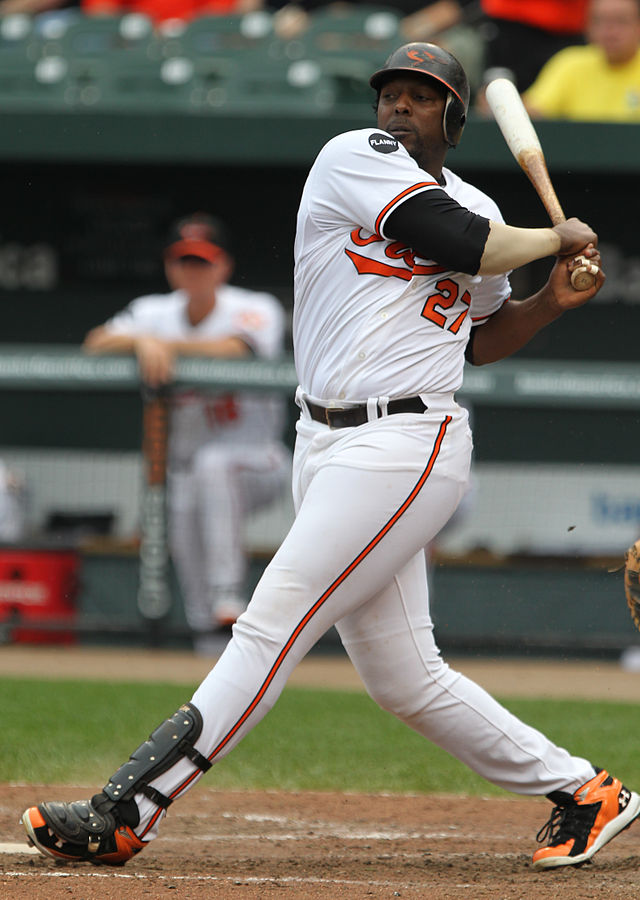
One of the most powerful swings and throwing arms in MLB history, Guerrero seemed to be able to hit anything, regardless of how far out of the strike zone it may have been, and throw the ball on a line to any base from anywhere in the outfield.
Another young stalwart of the Montreal Expos, “Vladdy” first achieved success and became a superstar in Montreal, with his breakout season coming in 1999, when he earned his first All-Star nod and the first of eight Silver Sluggers, hitting 131 RBIs and 42 home runs. His 2002 season was one for the ages, when he led the league in hits and total bases while tallying 39 home runs, 111 RBIS, and a .336 batting average
Guerrero, however, may be better known for his six seasons with the Los Angeles Angels, with whom he won the American League MVP in 2004 (with 206 hits, 39 home runs, and 124 runs) and led the Angels to five straight American League West titles. Guerrero was consistently feared by opposing pitchers for his prodigious power and ability to hit anything thrown at him. His power was on ultimate display at the 2007 Home Run Derby, when he won the contest in a notoriously difficult hitters’ park.
Finishing his career as the all-time leader in hits for Dominican Players with 2,590, Guerrero was one of the most fascinating players in MLB history. He retired with 449 home runs and 1,496 RBIs and was awarded for his efforts in 2018, when he was elected to the Hall of Fame with a 92.9% vote on the second ballot, becoming the first Dominican position player in the Hall of Fame.
His son, Vladdy Jr., ain’t half bad either. More on that later…
Nelson Cruz
Las Matas de Santa Cruz

Earning his spot on this list with an age-defying second act to his career, Cruz has been a critical player for multiple organizations and receives much attention for his ability with the “boomstick,” as he likes to call it.
Cruz first rose to prominence as a member of the Texas Rangers, where he sent grandstands into frenzies with his booming home runs, including many in the postseason; during the Rangers’ 2011 run to the World Series, Cruz hit a record-tying eight home runs, including several clutch hits in the ALCS and World Series. In 2013, however, he was linked to PEDs and suspended for 50 games, leaving some wondering if he would ever return to dominant form.
Unlike others tainted by the PED cloud, however, Cruz responded by becoming one of the most prolific players of the 2010s, leading all hitters with 346 home runs and starring as a designated hitter for the Seattle Mariners, being named All-MLB – an award introduced in 2019 to “cover the full breadth of a comprehensive season – First Team in 2019 and Second Team in 2020. Overall, Cruz has been named an All-Star six times, won four Silver Sluggers, and has led the American League in both home runs (2014) and RBIs (2017).
A fantastic designated hitter who resurrected his career after a failed PED test, Cruz may be one of the first proven PED users to earn his spot in Cooperstown.
Sammy Sosa
San Pedro de Macorís
“Slammin Sammy,” as he was affectionately called in Chicago, was a true superstar who exemplified everything to love about the game: record-breaking home runs, a rags-to-riches story, and an infectious enthusiasm for his beloved béisbol.
A seven-time All-Star and six-time Silver Slugger, Sosa was a legendary home run hitter who struck fear in opposing pitchers like few others in history. One of only three players since 1900 to tally 160 RBIs in a season (2001) and currently ranked ninth on the All-Time Home Run list with 609, Sosa was the bonafide stud for the Cubs in the late 90s and early 2000s, leading the National League in RBIs twice (1998, 2001) and home runs twice as well (2000, 2002).
What most fans remember Sosa for, however, is awe-inspiring home run race against Mark McGwire in 1998; while McGwire would break the record of 61 first, Sosa is well-remembered for entering the race with his legendary June performance of 20 home runs, his eye-popping total of 66 home runs, and his eventual winning of the National League MVP for his role of getting the Cubs to the playoffs. Also noteworthy are his 63 home runs in 1999 and 64 in 2001, despite not leading the league in home runs- thanks to Barry Bonds.
While PED allegations continue to hold Sosa back from the Hall of Fame, it’s impossible to overlook the unbelievable skill with the bat and joy he brought numerous Cubs fans- hopefully, one day the Cubs will welcome him back with open arms.
José Bautista
Santo Domingo
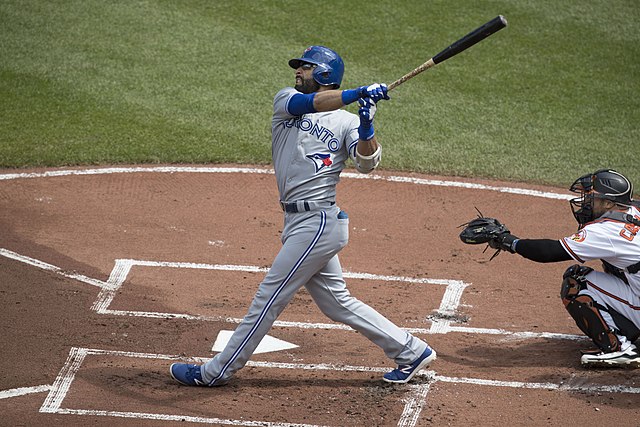
One of the most important players in Toronto Blue Jays history, Bautista was a home run champ, a disciplined hitter, and starred in some of the franchise’s most important moments.
Although he was first unceremoniously acquired by the Blue Jays for a player to be named later and spent his first two seasons with the team without regular playing time, a change to the coaching staff, an adjustment to his hitting approach, and a shift to the leadoff spot proved to be the catalyst Bautista needed. Leading off for the Jays in 2010 with a very un-leadoff-like home run swing, he became an overnight sensation, leading MLB with 52 home runs and notching his first of six consecutive All-Star nods, as well as his first Silver Slugger. Bautista was also incredibly disciplined at the plate, leading MLB in walks in 2011 with 132, as well as home runs with 43.
The bombastic Bautista marked a change for the Toronto Blue Jays, who won their first AL East title in 22 years in 2015, and proved to be the heart and soul of the team throughout the postseason. After Bautista hit a towering three-run shot to put the Blue Jays in front of the Texas Rangers, he would passionately flip his bat in one of the most remembered plays in modern MLB history.
A franchise player who had both power and discipline, Bautista’s role for the Blue Jays cannot be overstated.
Be sure to come back tomorrow for Part 3: Pitchers!











